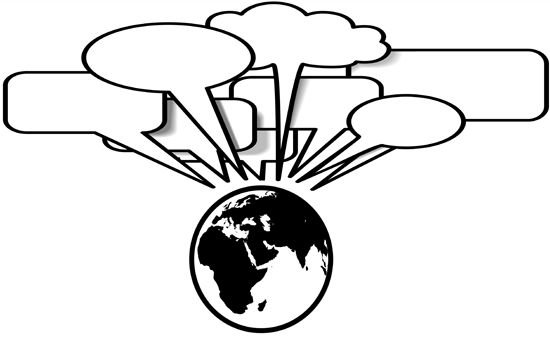On the eve of August 14, 2009, a community of digital activists was out on a mission, typing away on their keyboards to get Pakistan prominently mentioned on the homepages of the world’s most popular micro-blogging website – Twitter.
This effort was driven by a patriotic zeal to show love and unity towards homeland and to make a global impact, by drawing attention to Pakistan on its sixty-second anniversary. It proved to be successful, as Pakistan was able to make it to Twitter’s trending topics, a term used to describe the ten most talked about topics on the network. The combined effort came as a product of an e-rally launched by a group of digital activists across cyberspace to motivate people to include the term ‘#Pakistan’ in their tweets and turn their display pictures green to show solidarity to the nation.
Another such incident reflecting the power of cyber-activism was when Pakistan made headlines in Google’s Map experiment by being the fastest country to populate itself on Google’s Map Maker service, which allows users to post localized information about their country. Pakistani Internet users proved to be the fastest among the 160 countries in the experiment to map out locations. The drive for this commenced from a single blog post, which later spread through cyberspace through the ‘viral buzz’.
We have all experienced news and videos spreading like wild fire throughout such social media forums like Facebook, Digg, Stumble Upon, MySpace and Twitter. The sheer global outreach that is possible via the Internet is mind boggling. A few clicks and a few hits on the keyboard and you can reach out from your cozy, little room into the big, wide world. Today, activism is no longer limited to the streets. Now, you can launch e-rallies across cyberspace and mobilize a good number of people to work for a collective cause. Such social networks as Facebook and Twitter have proved particularly helpful in spreading awareness about issue or in promoting a cause.
The Internet has permeated our lives. What we know, what we learn, what we do and what we think all seems to be intricately shaped by the web. Today, the Internet plays a significant role in what communication scholars term the ‘agenda-setting function’ – the idea that the media is stunningly successful in telling people what to think about (if not what to think).
The need for Muslims to make use of these technologies is profoundly clear. Such social media as Digg and Reditt can help us get our content as close to the mainstream media as possible. Content that is popular and ‘dugg’ many times can find its way to leading topics on these websites that have global audiences. Furthermore, via social networks on the web, we can coordinate volunteer activities and mobilize support for charity work. Once again, we have the example of Pakistani bloggers earning international recognition for mobilizing support for the IDPs in the recent Swat crisis.
Many Muslims view social media and media in general with suspicion. However, such views are often based on ignorance. Prophet Muhammad (sa) used to utilize the media of the time to communicate with the people. For instance, at a time when Allah (swt) ordered the Prophet (sa) to proclaim the message of Islam openly to people in the early days of Islam, the Prophet (sa) went up the Mount of Safa, knowing that it was the technique of the time to communicate from there, when one had an important message and sought attention.
Today, we have the Internet and the social media as techniques of the time to communicate to wide audiences effectively. It is needless to say that Muslims must utilize these tools to communicate their message to the masses, draw attention to important issues and mobilize support for beneficial causes.
Quick Fact: What is micro blogging?
It is a form of blogging that allows users to publish brief text updates, with or without the addition of photos, audio clips or other multimedia, over the Internet. There are specific websites for micro blogging. One of the more popular website is Twitter at http://www.twitter.com.







